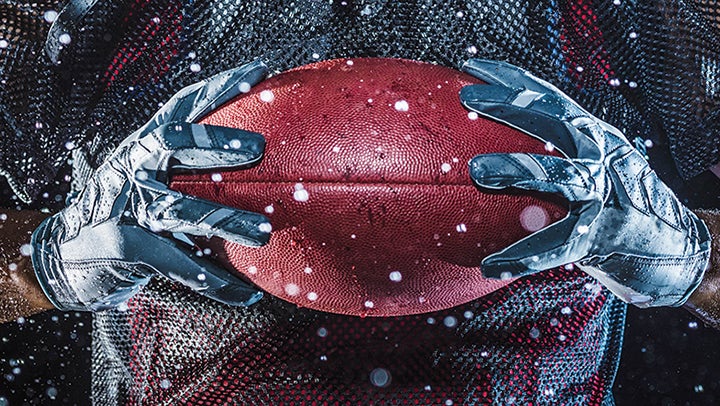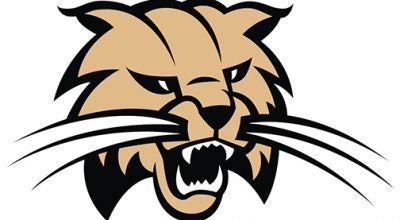USC, UCLA to Big Ten the latest dumb domino to fall in college football landscape
Published 4:10 pm Tuesday, July 5, 2022

- Football in the rain
Good Lord, this is stupid.
Anyone else have that thought when they heard the news on Thursday that the University of Southern California and the University of California at Los Angeles — more commonly known as the USC Trojans and UCLA Bruins — would be moving to the Big Ten Conference in 2024 for athletics?
Forgive me if this begins to sound like an old man yelling at the clouds, but it was once much, much easier to keep up with who was a member of each conference in the not-so-distant past.
Tradition says the Big Ten has long been a league made up of schools in the Midwest.
Football teams in the conference primarily ran the ball, sometimes faced off in driving snowstorms and played each other for some of the best rivalry trophies in all of sports, like Floyd of Rosedale (a statue of a pig to the winner between Iowa and Minnesota) and Paul Bunyan’s Axe (a six-foot axe to the victor of Wisconsin and Minnesota).
Ten teams made up the league — hence the name — which is the oldest collegiate athletics conference in the United States and that number held until 1990, when Penn State was offered a spot in the league.
Penn State fit in with the other conference members like a hand sliding into a glove and the same would be true of Notre Dame, a team that flirted with membership in the Big 10 for years, as the Fighting Irish have traditional rivalries against many of the original members.
When the University of Nebraska left the Big 12 in 2012 to join the Big Ten it wasn’t that crazy of a move.
When the league further expanded to 14 teams in 2014 by adding the University of Maryland and Rutgers University, that wasn’t an earth-shaking move and felt more like a panicked play in a changing landscape of schools jumping conferences at that time.
The inevitability of USC and UCLA making this move represent one more final nail in the coffin of the college football worldview that most of us grew up watching.
Don’t read this as another dude lamenting the loss of the “soul of college football” though.
Buddy, that ship sailed a long, long time ago.
Of course, you wouldn’t drive the distance between Los Angeles and Lincoln, Nebraska — not in this economy — but for fun let’s fire up the ole MapQuest machine to see how close the Trojans and Bruins will be from the Nebraska Cornhuskers, their western-most neighbors in the Big Ten.
It’s a 1,500-mile distance from LA to Lincoln, Nebraska and it’s 2,800 miles from UCLA to the eastern-most school in the league, Rutgers in Newark, New Jersey.
How and why did we go from the way things were — member schools of the Pac-12 in the far west, the Big 12 in the near west, the SEC in the south, the Big Ten in the Midwest and the ACC on the Atlantic coast— to what we have today in college football?
It’s all about money, of course.
As college football began to stake out a larger fanbase on the national landscape over the last two decades, ESPN and other television networks helped pour money into the sport as advertisers flocked to reach the coveted 18-34 demographic of viewership.
The money went to the conferences and was distributed to the schools and everyone had to figure out how to spend that cash on anything short of paying the players a fair wage.
Salaries for head coaches have continued to climb like the stock market in a bull run. Coaching staff sizes ballooned too. Teams still have an offensive coordinator and defensive coordinator, but now also have various analysts and huge support staffs focused on nothing but recruiting.
At last check, there were 28 states where a head football coach was the highest paid state employee. The assistant outside linebackers’ coach might make as much yearly as the governor in the land of the SEC.
Stadiums also got bigger and locker rooms got nicer as the television money came through. The locker room at Clemson has more in common with Six Flags than it does to where kids get dressed for football games at Bogue Chitto or West Lincoln.
The Tigers have a mini-golf course, a bowling alley, a barber shop and a slide that players can ride down from one level to the other.
Oh yeah, it’s also got a weight room and places for linemen to put on their pads before practice — it only cost $55 million dollars.
The NCAA oversaw all of this as the governing body for college athletics and watched plenty of money come its way thanks to the popularity of college football.
Did anyone reading this grow up with a parent that dished out punishment in a wildly inconsistent manner?
Like for instance, you were three minutes late for your curfew and your parents grounded you from everything other than church for a month.
When your little brother got suspended from school for smoking in the parking lot though, they just told him they were disappointed in his actions.
That’s basically the NCAA model for enforcing its rules and regulations.
The NCAA also got greedy and allowed the schools to follow its lead.
There were video games — awesome video games that are still missed — that had real college players in them, but with names left out.
If you went into Ole Miss campus bookstore in 2003, you’d be greeted with rack after rack of football jerseys that had No. 10 across the front and back.
If you bought one, you were buying an Eli Manning jersey. It didn’t say Manning on the nameplate though — that was blank — and Eli didn’t see a dime of the money made off his popularity and success.
Eli did get his college education paid for and for the longest time, that’s been the cry of those who didn’t want to pay the players for the revenue that their labor generated.
The NCAA kept players from profiting off their name, image and likeness for as long as they could, but in 2021 that all changed.
Individual states made their own laws about if college — or in some cases, high school — players could profit from NIL deals. The Supreme Court also affirmed that the NCAA couldn’t limit education-related benefits to student-athletes.
That has all ushered in a new wrinkle in this age of stupidity that currently lords over college football.
This week, four-star quarterback Jaden Rashada made a verbal commitment to play football at the University of Miami as part of the class of 2023.
Reports circulated widely that Rashada turned down an $11 million NIL offer from the University of Florida to play at Miami on the promise that he’d get a $9.5 million NIL package from the Hurricanes.
That might all sound like some kind of mumbo jumbo to anyone who was weaned on the game when teams that “aired it out” attempted 20 passes per game.
Make no mistake, though — college football players have been getting paid by boosters since helmets were made out of leather. Nothing though, has ever reached these mammoth numbers as schools can now buy players in an open marketplace.
An exchange of $20,000 in a Hampton Inn parking lot is now chump change as inflation has hit college football even harder than it’s hit the price of gas in the last year.
The insiders that follow the money within college football have predicted something like the USC and UCLA move since it was announced last year that the University of Texas and the University of Oklahoma would be joining the SEC in the future.
Which geographically speaking, is a much more sensible fit than two schools in southern California joining a conference that has fans keener on bratwurst than kale salad.
Some of those same insiders are predicting that there will eventually be two major super-conferences. One with teams that play their games on ESPN and another that play their games on the Fox networks.
Many ask the question, what do the major conferences even need the NCAA for? Why not just break off and form their own super-league?
So yeah, keep getting weirder, college football.
Put Oregon State in the western division of the SEC, have your boosters pay $1 million for a backup punter and replace the NCAA with a new organization chaired by Brian Bosworth.
Whatever, man.
When the season starts back up in late August though, I’ll still be watching though — even if I feel stupid doing it.
Cliff Furr is the Sports Editor of The Daily Leader. He can be reached via email at sports@dailyleader.com.





